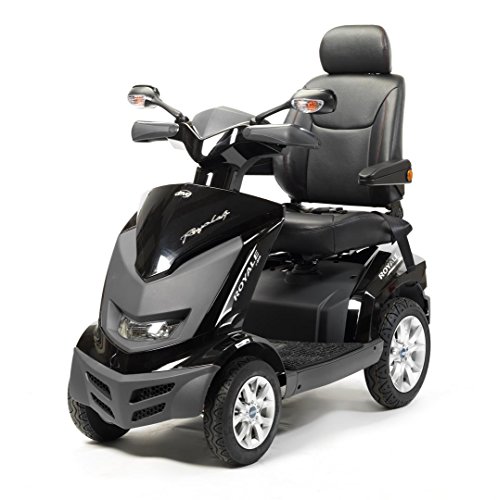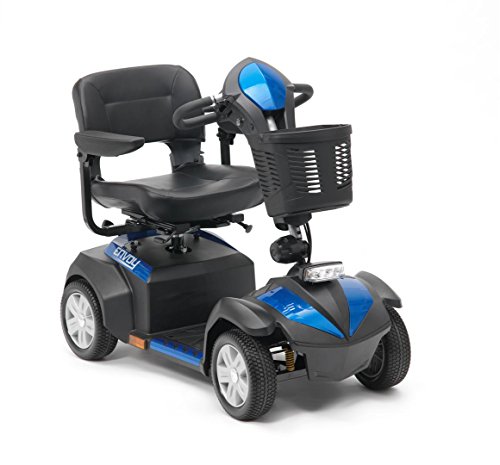What's The Current Job Market For Mobility Scooters Road Or Pavement P…
Lyn
2024.12.09 11:41
182
0
본문
 The Basics of Using a Mobility Scooter on the Pavement
The Basics of Using a Mobility Scooter on the PavementMobility scooters can save the lives of those who are struggling to maintain their physical health. They are able to travel longer distances and are capable of getting out and about more quickly.
Class two scooters are not allowed to exceed 4 mph on roads and should not be driven on bus or cycle lanes. They are not permitted to be driven on dual-carriageways, unless they are equipped with an active amber flashing lamp.
Scooters on the road legal mobility scooters
Mobility scooters can be a convenient and popular form of transportation for those with limited mobility. However they must be used in a safe manner. Drivers should not just maintain their vehicle in line to the guidelines of the manufacturer however, they must also abide by local regulations and be aware that pedestrians as well as other vehicles are at risk. The first step in using a mobility scooter is to familiarize yourself with the local guidelines and regulations.
Scooters should not be driven on roads, but on footpaths or sidewalks. They are not designed to handle the traffic and speed of vehicles, and they may cause injury or damage to other road users. Additionally, scooters are not able to stop quickly and are generally harder to spot than cars. Therefore, it is essential to wear an reflective jacket and keep your eyesight current when you are riding a scooter on the road.
Certain municipalities restrict the areas you can ride your mobility scooter, but generally, it is safe to ride on most streets. In low-visibility areas it is recommended that you use a mirror facing towards the front and headlights. You should also consider using a rear-view mirror in order to be able to monitor other vehicles and obstacles. If you're unsure how to operate a mobility scooter, it is best to enroll in a course that is offered by local insurance firms or schools.
Mobility scooters in class 3 are permitted on roads but they shouldn't be driven in cycle lanes, or other designated lanes. Avoid using the scooters on dual carriageways if the speed limit is more than 50 mph. It's also recommended to outfit your scooter with a flashing amber light to increase its visibility.
When riding a scooter it is essential to ensure that you're visible to other drivers. In addition to wearing a reflective jacket it is important to make sure that your scooter is equipped with an appropriate lighting system to reduce the chance of collisions with other vehicles. It's also an excellent idea to avoid riding a scooter on the roads at night, as it could pose a risk to you and other road users.
Scooters on the pavement
There's no doubt that mobility scooters have provided thousands of people across the UK the freedom to navigate their surroundings with ease. It is important to remember, however, that these vehicles are classified as a type of vehicle and should be used with caution. Many new mobility scooter users are not aware of the rules and regulations that surround them. This article will go over the fundamentals of operating a scooter on the pavement and how to do it safely.
There are two different types of mobility scooters two classes: class 2 and class 3. Class 2 scooters are only allowed to be driven on the pavement and in pedestrian zones, they have an upper speed limit of 4 mph. Class 3 scooters can be driven on road and pavement and their speed can be increased to 8 mph.
In general, it is not legal to operate any scooter in the cycle lanes or bus lanes. This is to prevent collisions between scooter riders and motorists. It is also illegal to park a scooter on the sidewalk if it will hinder pedestrian access or cause an obstruction.
Pedestrians should always give way to the other pedestrians on the street including wheelchair users as well as those using prams or pushchairs. 6mph mobility scooters scooters are quick and heavy, which means they pose a serious danger to pedestrians, especially if they're not paying attention or have vision or hearing impairments.
It's important to remember that the majority of shops have doors designed for wheelchairs or smaller scooters. It's also important to remember that you should only travel at a pedestrian speed that is not more than 4 mph as people tend to walk slower in the shops.
If you intend to use your mobility scooter on public transport, you should make sure that it's registered to the Confederation for Passenger Transport's code for the process of boarding and exiting buses. You'll usually have to attend a training session to be able use your mobility scooter when taking buses.
Scooters on the streets
Some seniors use Mobility Scooters Road Or Pavement scooters to move around because they can mobility scooters go on road assist them in staying independent and prevent the need to move into an assisted living facility. But they should be aware of the rules of the road and how to operate their scooter in a safe manner. For instance, they must wear a helmet and keep it well-maintained, and avoid riding in bad weather. They should also follow all traffic laws, and be sure to stay on the right side of the road.
Many municipalities restrict the roads that mobility scooters can use to ensure safety and prevent congestion. This is because scooters are typically designed to be driven on sidewalks and in pedestrian areas, which means that their use on roads can cause traffic disruptions. However these restrictions aren't always enforced and it is important to be aware of the laws in your local area.
Generally, mobility scooters are not permitted on roads and areas with high traffic even though they be faster than a car. In addition, they're not permitted to drive on bus lanes or cycle lanes, which could be hazardous for drivers and other users of the road. In addition, if you're unsure about the rules in your local area, it's best class 3 mobility scooter to purchase insurance for your scooter.
Mobility scooters should also be operated on sidewalks and other pedestrian areas at a reasonable speed. Therefore, they do not cause danger to pedestrians and don't hinder traffic. They must follow traffic signals and cross the street only at designated crossings. Additionally, they should be visible to pedestrians by wearing bright clothes and using reflective equipment.
It is not legally required to have your scooter insured however it is recommended. It will safeguard you in the event of an accident or loss, and will cover repair costs in the event of an unavoidable breakdown. It is also an excellent idea to invest in some extra equipment, like a scooter flag or reflectors to increase your visibility and help you stand apart from the other riders. It is also advisable to consider breakdown cover because it can be helpful when your scooter is damaged in the middle of the road.
Scooters on the car park
Mobility scooters can be a great source of independence and freedom for people with limited mobility. They let users move around their local area without having to rely on the timetables of family members or family members. They also provide a convenient method to get to the nearby cafes and shops. However, the increase in popularity of these scooters could have a number of positive and negative effects on urban environments.
Some areas might not be able to accommodate scooters on sidewalks or pedestrian pathways, despite the fact that the majority of countries do. The weight and size of these scooters makes them difficult to maneuver in these spaces, and some obstacles (such as trees or garbage cans) can hinder mobility. Additionally they are frequently used by older people with limitations in mobility, making them more prone to falls.
If you intend to use scooters in public areas it is essential to understand the laws and regulations that govern their use. In the UK, for example all scooters are required to be operated at no more than 4 mph in areas that are pedestrian-friendly and on pavements. Additionally, they cannot be parked on sidewalks since it could block the entryway of other pedestrians.
It is important to remember that scooters cannot be used on cycle lanes, or in bus lanes. They should also be secured so that they do not block the access of others who require mobility scooters. In addition, scooters must not be driven on dual carriageways unless they are equipped with an amber flashing light that is active and active.
In addition, scooters can be parked in handicap parking spaces provided they have an accessible ramp and comply with relevant laws. These rules are fairly common across the country, but it's important to verify local laws to make sure you don't violate any.
 The rising popularity of mobility scooters has resulted in an increased demand for parking in the UK. The spaces should be near the users' homes and close to the destinations they frequent. Idealy, these spaces would also be secured from weather and theft. The increasing use of scooters in urban areas could be beneficial to the design of the space by creating a safe environment both for pedestrians and 8mph scooter drivers.
The rising popularity of mobility scooters has resulted in an increased demand for parking in the UK. The spaces should be near the users' homes and close to the destinations they frequent. Idealy, these spaces would also be secured from weather and theft. The increasing use of scooters in urban areas could be beneficial to the design of the space by creating a safe environment both for pedestrians and 8mph scooter drivers.
댓글목록 0